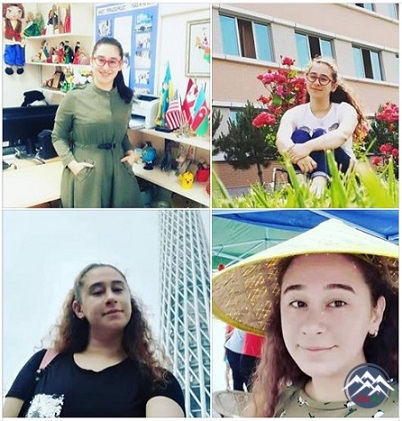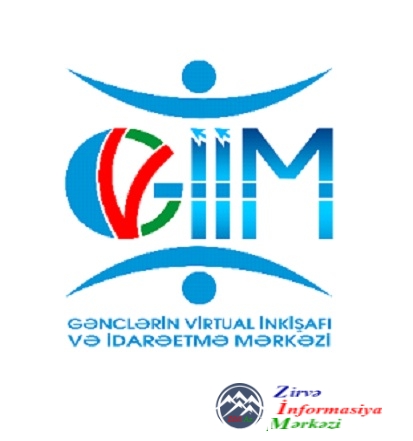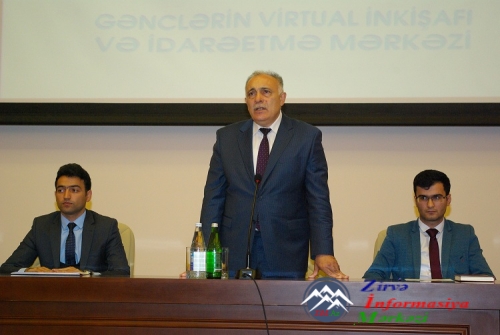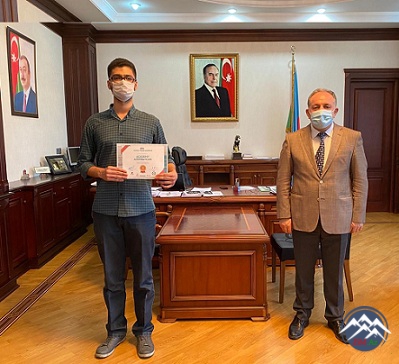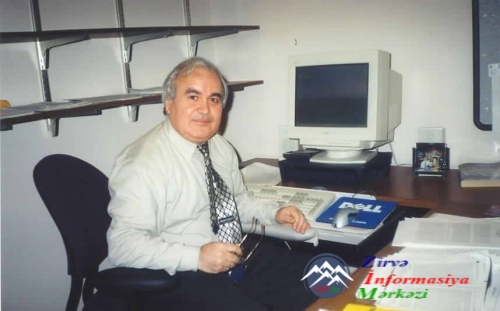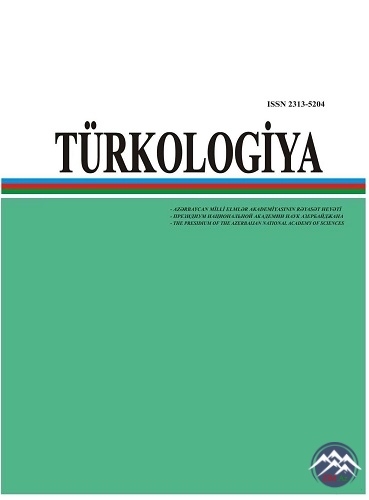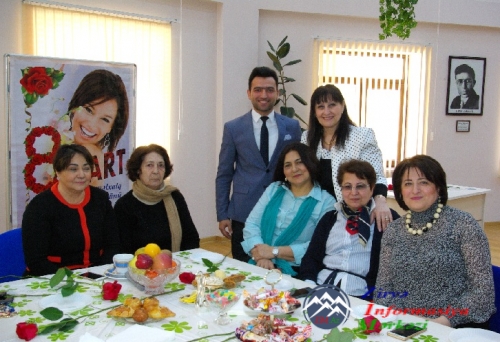
Tavat Hüseyn qızı Muradlı - 17.01.1991-ci ildə Bakıda anadan olub.
2008-ci ildə Bakıdakı G.Abbasov adına 284№lı orta məktəbi bitirib.
2008-2012-ci illərdə Azərbaycan Dövlət Dillər Universitetində /Filalogiya-İngilis dili və Ədəbiyyati ixtisası üzrə bakalavr,
2012-2015-ci illərdə isə yenə həmin universitetdə “Dilçilik, filologiya” ixtisası üzrə maqistr təhsili alıb.
2017-2018-ci illərdə Almaniyanın Konstanz Universittetində “Multilinguailsm” ixtisası üzrə, 2019-cu ildə isə Türkiyənin Ondokuz Mayıs Universittetində “İngilis dilinin tədrisi”ixtisası üzrə /Master/ təhsilini davam etdirib.
2015-cı ildə CURRICULUM Course, Baku (Azerbaijan), 2016-cı ildə MSM Academy international language school in Prague, 2018-ci ildə YÖKDIL (Higher Education Institutions Foreign Language certification), 2017-ci ildə IELTS certification, 2019-cu ildə TESOL Certification (Teaching practice certificate and Certificate in the teaching of English to speakers of Other Languages) və s. Sertificatlara layiq görülüb.
“Scientific papers in EFL. / xarici dil kimi ingilis dilində elmi tədqiqatlar/ çalışmalar/ araşdırmalar,meqaleler” adlı kitabda məqaləsi dərc olunub.
Aşağıda isə "Improving Turkish EFL Secondary school students’ pronunciation through a virtual reality game managed by a humanoid robot” sərlövhəli məqaləsini təqdim edirik.
ZiM.Az
Ondokuz Mayis University
Faculty of Education
Department of Foreign Language Education/
(İngilis dilinin tədrisi) Master
"Improving Azeri EFL Secondary school students’
pronunciation through a virtual reality game
managed by a humanoid robot"
Prepared by: Tavat Muradlı Huseyn qızı
Abstract
Technology integration has become increasingly widespread in language education, and technological teaching tools are commonly used for English education. In keeping with this trend, it is also believed to be effective in teaching and learning pronunciation. To shed light on the issue, this study aimed to analyze the impact of a virtual reality game managed by a humanoid robot, on the pronunciation of Azeri EFL secondary school students. In this case, the pronunciation proficiency of different consonant sounds was assessed before and also after the administration of the virtual reality game managed through the humanoid robot. A computerized program known as ‘Speech ace Browser ’ was used to assess students' English language pronunciation. A total of 10 EFL students were selected for this particular study. They were aged between 14 and 16 years. They included five boys and five girls who were selected through the purposive sampling technique. A group of 5 students served as the control group and the other five participated in a virtual reality game managed by the humanoid robot to study pronunciation. The results of the study revealed that there was a significant difference between learners’ performance before and after the training sessions. This article shows that simulated games within virtual reality can be applied in improving EFL students ' pronunciation skills and utilized in helping them to develop native-like pronunciation.
ÖZET/ Xülasə
Texnologiyaların inteqrasiyası dil təhsilində getdikcə daha geniş vüsət alır və hazırda ingilis dilinin tədrisi üçün texniki tədris vasitələrindən istifadə olunur. Bu tendensiya uyğun olaraq texnalogiyanın tələffüz tədris və öyrənilməsi prosesində də təsirli olduğu düşünülür. Mövzuya işıq tutmaq üçün, aparılmış bu tedqiqat humanoid robotun idarə etdiyi virtual reallıq oyunu vasitəsilə tələffüzün öyrədilməsinin Azerbaycanli telebelerin tələffüzləri üzərindəki təsirini analiz etməyi amaçlamıştır. Bu halda, müxtəlif samit səslərinin tələffüzünün adekvatlığı, robot tərəfindən idarə olunan virtual reallıq oyununun idarə olunmasından əvvəl və sonra qiymətləndirilmişdir.Ingilis dilində tələbələrin tələffüzünü qiymətləndirmək üçün ‘Speech ace Browser’ kimi tanınan kompüterləşdirilmiş proqramdan istifadə edilmişdir. Ümumilikdə, bu tədqiqat üçün 10 EFL tələbəsi seçilib. Tədqiqatın nəticələri göstərir ki, dərsdən əvvəl və sonra şagirdlərin göstəriciləri arasında əhəmiyyətli fərq var. Bu məqalə, virtual reallıqda simulyasiya edilmis oyunların EFL tələbələrinin tələffüz bacarıqlarını artırmaq üçün tətbiq oluna biləcəyini və doğma tələffüzləri (native like pronunciation) inkişaf etdirməyə kömək etmək üçün istifadə edilə biləcəyini göstərir.
Keywords: Virtual Reality Game, pronunciation practice, EFL learners
CHAPTER ONE
1.0 Introduction
Learning a second language is not an easy undertaking and requires effective planning and instruction competencies. Most students learning English as their second language usually encounter different challenges in the course of developing proficiency. Such complexities are evident in different elements of the English language which are difficult to comprehend like understanding the consonants and how they are used among other related complexities. Given the global influence of English, many people who are not native speakers have continuously been struggling to develop proficiency as well as fluency in this language. However, this undertaking is challenging and in frequent cases, most learners will be demotivated and discontinue their English studies. In countries like Azerbaijan, for instance, there is a large and aggressively growing number of English learners in different levels of education, especially secondary schools. Although in different secondary schools in Azerbaijan English is usually taught as a subject, it has been very difficult for the students to comprehend some of the basic elements of the language especially consonants. This situation presents a crucial opportunity for effective designing of instructional designs in EFL lessons to boost the proficiency of learners in this particular field of study. Effective utilization of different technologies including virtual reality can create an advanced and quality learning environment for the EFL students ideal for easy mastery of the English language.
English can be described as a revolutionary language given that new vocabularies keep on developing prompting the enhancement of various features. Therefore, such characteristics make it challenging for the English learners as well as the natives to understand its key components. Overall, challenges are inevitable for the EFL learners and most of them cannot live up to the expectations despite the aggressive efforts to popularize the English language (Akbari, 2015). The problem is further worsened by the big variations between the first language and the English. For instance, in Azerbaijan, despite the availability of some similarities between Azeri and English, there are many differences in different aspects including the consonant sounds and pronunciation among others. Therefore, these differences in the two languages stand out as the main barriers towards EFL learning. When a person learns the native language during childhood, its influence usually becomes more internalized and impacts communication and understanding patterns in a future life (Salim & Al-Badawi, 2017). Therefore, when it comes to learning a foreign language, the learners will encounter a reversal influence created by the native language. In the case where the structure of the first and the second language has significant variation, like in the case of Azeri and English, the expected outcomes will then be errors in learning and also difficulties when it comes to performance. Therefore, it means that when learning a foreign language it is crucial to apply the techniques which change the first language behavior.
According to Yates (2017), for the learners to develop effective skills of speaking in any given language like English, it is crucial to attaining pronunciation proficiency which research indicates has attained limited visibility. There is substantial research evidence that consonant sounds are one of the main challenges that EFL learners usually encounter in the course of developing mastery. There is a high probability of the English learners being contradicted by the consonant sounds of their native language. In such a situation, there is a possibility of discriminating words with variation in terms of the consonant sounds. The inaccuracy of handling or differentiating the consonant sounds poses the challenge of proper pronunciation when learning the English language. The instructors should identify the available similarities between the two different languages to establish a proper pathway of guiding the learners. The challenges of learning a foreign language can be linked with the availability of limited options to allow EFL learners to interact adequately with the English content. The inability to produce effective English language sounds is not because of the physical challenge to do so but can be attributed to the failure of effective competencies in distinguishing the sounds. Therefore, EFL learners are unable to organize the sounds effectively and do the appropriate manipulation as provided by the English language structure (Ercan, 2018). Therefore, specialized techniques and instructional methodologies should be applied to ensure that EFL learners attain an effective level of consonant sounds.
Different researchers recognize EFL learners as a very sensitive group when it comes to the acquisition of knowledge and there is an immediate need to provide them with the necessary support materials that can guide them towards the acquisition of English proficiency with ease. The best means of resolving the intonation problem among English learners is finding ways that make them more conversant with different related sounds. Consequently, the instructors must understand the essence and also the importance of advancing quality training when it comes to developing knowledge of consonant sounds. In learning a new language like English, it is crucial to appreciate the essence of communicating and being understood by the learners. In Azerbaijan for instance, when it comes to the teaching of English, the pronunciation of different sounds has been highly ignored among the students as well as teachers in Azerbaijan including at the high school level. In this case, they are beyond giving critical attention to the ability to listen whereby the assimilation of consonants plays a critical function in the course of learners comprehending different types of sounds that they come across when listening (Demircioglu, 2013). Different English consonants that are not present in the Azerbaijani language are the main causes of the articulation challenges. Specifically, there is some level of negligence and also not giving critical attention to the different sounds used during pronunciation by the EFL teachers hence prompting the occurrence of fossilization impact. Another main challenge predominant in the Turkish English classroom for levels like secondary schools is that there are no skill-based learning techniques. The prevalent situation in Azeri EFL classrooms calls for a tactical approach to facilitate effective skills adoption among the learners.
The emergence of different technologies has brought significant shifts in learning for different fields of academic studies. Therefore, technological solutions stand out as one of the most reliable methods of facilitating efficiency-based EFL learning in regions with diverse backgrounds like Azerbaijan. One of the most reliable and effective forms of technology ideal for improving consonant sounds proficiency among EFL learners is virtual reality (VR). Specifically, virtual reality is described as a form of simulated experience that can resemble or be different from the normal world situation. It entails the establishment of digitalized forms of environments whereby various users can effectively interact using information (Bonner & Reinders, 2018). Different forms of virtual reality like games can be used to facilitate this particular action plan. In an ideal situation, virtual reality is characterized by highly advanced features and agile components that can facilitate human beings to have direct experience from various environments which under normal circumstances are inaccessible ( Alemi & Khatoony, 2020). Technological integration in the language education sector has become highly influential in both teaching and also learning activities like pronunciation and even consonant sounds practice.
Virtual reality entertainment components like games can help the EFL students to pursue learning and at the same time enhance their level of engagement with the English language content. The VR learning technique can also create substantial transformation in terms of how the English educational content is delivered to the students. This outcome occurs through the creation of a virtual world which is real or imagined and in turn, allows the learners to not only using but also interacting with it. Such proficiency will give the EFL learners a practical opportunity of pursuing English language elements like consonants. Virtual technology has other positive influences including the creation of a suitable EFL learning environment; boost the learning results as well as improving the morale of students. There is research evidence that virtual reality can boost English language competence and also boost the immersion sense of the learners (Chen & Chen, 2016). Such proficiencies qualify virtual reality technology to become a priority in EFL classes.
There is a crucial need for today’s English learners to be exposed and continuously interact with virtual realities like standard simulated games (Khatoony, 2019). In this case, the learners will find more entertaining means of learning the pronunciation of different sounds like consonants. Pronunciation is a very crucial aspect of the English language and understanding the dynamics involved when using technology is very crucial.Despite all the positive EFL learning competencies linked with virtual reality, it is rational to conclude that this technology has not been adequately utilized in most Azeri secondary school English classes. Therefore, there is a reduced competency level unlike in the other parts of the world whereby virtual reality games have become part of the EFL classes’ necessities. It is worth noting that there is a need for Azeri secondary schools to integrate virtual reality technologies for EFL learning. This particular research study will provide crucial information on the improvement of consonant sounds pronunciation by the Azeri secondary school EFL students through virtual reality game which is managed by humanoid robots.
CHAPTER TWO
2.0 Literature Review
Different authors and researchers have done comprehensive studies on the use of virtual reality technology for EFL learning. The available information, in this case, has been crucial for the integration of virtual reality in different settings and learning contexts. This section will entail comprehensive information including scientific findings, views, and opinions on advanced approaches for EFL teaching and learning. Importantly, there will be the incorporation of details regarding the use of virtual reality games for EFL learning activities including pronunciation.
2.1 Virtual Reality and EFL Learning
Yang et al. (2020) postulate that EFL learners must develop the necessary communicative abilities with the inclusion of pronunciation. The researchers in this case recognize the fact that the conventional utilization of textbooks only for the provision of English language knowledge theoretically will not engage the learners adequately. In their study on EFL learning, Yang et al., (2020) postulate that through the use of high-immersion VR, the undertaking of learning language can be easily changed into a more personalized experience. Additionally, through the use of a highly simulated environment, it is easy to establish the self-directed mode of learning and in turn boost the level of engagement. Even in the case whereby there are different poorly performing learners, it is possible to increase their communicative ability through the use of VR. The overall conclusion in this study, the researchers applaud the capability of the application VR in English learning for the ability to increase the communicative capability as well as an enhanced sense of presence in an EFL context. Additionally, it will be possible to create a positive experience for the learners. However, in the course of introducing the idea of virtual reality, it is crucial to consider the aspect of accessibility by the learners. Overall, there are constructive outcomes of high-immersion technology of VR incorporation in the context of learning the EFL.
Other researchers Bonner & Reinders (2018), explored the influence of virtual reality in the case of the language classroom. The researchers acknowledge that virtual reality has not been adequately integrated for language learning in different levels of education including in secondary schools and even universities. Such findings, therefore, are an indication that even before focusing on the usage of virtual reality, it is critical to creating awareness of the need for integration. Bonner & Reinders (2018) cite that it is easy to integrate VR in language classrooms without necessarily having specialized or technical skills. In some English language classrooms, teachers or instructors are reluctant of integrating VR because they don’t have technical skills. The ease of VR technology in this case gives an additional advantage and also a good reason for introducing such competency in EFL classrooms. One of the recognized attributes of VR in the language classroom is the ability to reduce any potential distractions. In such a situation, it will be possible to make the learners concentrate more on the learning material. VR specifically creates highly interactive learning environments and in turn enabling the second language learners to undertake authentic activities of learning (Tai, Chen & Todd, 2020). Therefore, students will be fully immersed in the specific language item they are learning like consonants. Consequently, such a high level of immersion will assist the learners in formulating real-world connections and link them with the concepts they are learning in classrooms. This extended level of interconnection will generally prompt the enhancement of cognition during the English language lessons. Therefore, EFL learners will enjoy the benefits of active participation and also construct their ideal environments of learning after integration of VR.
Minocha, Tudor & Tilling (2017) in their research confirm that VR has the capability of facilitating a self-directed form of learning. Additionally, it enables the tutor to demonstrate various items effectively to the learners. In this case, using technological gadgets like tablets and computers, the instructor can initiate real learning activities that are strategically designed to achieve specific objectives of language learning. The main impact therefore will be the effect of learners critically visualizing different challenging or complicated concepts like consonant sounds. Further research indicates that most EFL teachers have a positive perception of the use of VR for language learning as the main component of instruction in the classroom context. However, some teachers have fear of handling or dealing with the newly advanced virtual technologies (Rahimi, Golshan & Mohebi, 2014). Based on such a situation, the education stakeholders and other experts must formulate viable ways of familiarizing teachers with the new technologies including training them.
2.2 Virtual Reality Gaming and EFL
Morley (1991) agrees that teaching of English pronunciation has significantly changed throughout the years characterized by new demands of learners which call for critical situation assessment in a bid to mitigate the prevailing dynamics for different groups including EFL students. Based on the current situation, it is possible to integrate entertainment with education activities and attain various benefits. Gaming has been one of the most commonly used entertainment techniques used to create advanced experiences for the learners in different fields of study including EFL learning. Khatoony (2019) explored the concept of innovative teaching mechanisms for language using serious games assisted which are VR-assisted. In a comparative study, the researcher concluded that students who use VR games for learning language will attain higher achievement. VR games are described as having the capacity of strengthening the intelligence of language learners through repetition of language learning aspects like consonant sounds pronunciation practice in a highly relaxed setting. However, it is important to note that some of the young learners might encounter challenges when interacting with various forms of technologies. Primary research outcomes indicate that the key challenges for the language learners include the development of ideal digital forms of literacies across different contexts (Farr & Murray, 2016). Therefore, such a situation presents the need for computer literacy training before the introduction of VR games for language learning. Such an undertaking will ensure that learners have the ideal level of skills and competencies needed for this particular action plan. The creation of awareness on the ideal forms of language learning technologies is also a constructive undertaking.
There are different competencies that EFL facilitation technologies should attain. Franco et al. (2010) argue that an effective technology system should recognize the available pronunciation limitations and challenges as well as helping the students to improve their proficiencies in these particular areas of difficulties. Such development explains the difference between traditional means of instruction or teaching language and advanced technological means. The use of games and other forms of simulative interactions leads to the development of enhanced cognitive capabilities and also the emergence of positive attitudes towards the learning activities than when traditional mechanisms are in use (Lin & Lan, 2015). Additionally, virtual technology is further applauded for its capability of providing a highly simulated as well as a highly viable and authentic environment of learning. Given the increasing number of students taking EFL classes, there is a need of introducing automated mechanisms of instruction.
Overall, the literature reveals critical details about virtual reality gaming and EFL learning. Most of the available literature applauds such an action plan and links it with positive outcomes in the case of language learning. Such outcomes stand out as reliable evidence and also confirmation why virtual reality gaming especially which is supported by humanoid robots should be introduced in the EFL classrooms. Such an undertaking gives the learners’ real-world experience and directly interconnects it with classroom experiences and creates room for establishing an ideal environment for English learning in a foreign context. Consequently, gaming is a form of entertainment and the fun involved prompts the learners to have more concentration. The outcomes in such a scenario students will be more engaged in learning and turn boost the level of performance and proficiency in different issues including pronunciation.
However, accessibility of the virtual reality technologies is a concern and should be the main consideration during integration in EFL classrooms. Based on the available literature, further research studies are required to assess the advanced application, appropriateness, and other technological VR gaming practices related to English language learning in a foreign context. Therefore, VR technology will be impactful positively through the advancement of learners’ experiences and also the quality of EFL learning. Although the idea of integrating EFL learning and gaming has desirable outcomes, there are various considerations that standout as success determinants. For instance, there should be close cooperation between the virtual technology developers and the EFL teachers in a bid to come up with agile technological solutions ideal for resolving these particular pronunciations. Additionally, funding is very crucial to enable EFL teachers to actualize the virtual gaming technology successfully (Chen & Chen, 2016). The traditional mechanisms of using textbooks will in turn lead to the establishment of the VR supported environment for EFL learning. The success of this initiative is majorly based on the efforts of visionary investors and the EFL teachers as well as other stakeholders. The mode of learning from the games and the affordable design of technology will be a critical beginning point of advancing the EFL VR supported education for pronunciation problems and other related English language complexities in Azerbaijan.
The available literature indicates that there is substantial information regarding the use VR for the EFL learning purposes. This particular set of information offers guidance on how to use VR gaming to facilitate English learning as the second language. However, it is crucial to note that there is no such study which has been conducted in Azerbaijan especially when it comes to the use of humanoid robot supported VR game for EFL learning. Therefore, such outcome provides a critical opportunity for undertaking further research study. Specifically, this research will serve as a crucial basis for further studies to understand the impact of technological shift on the EFL learning.
CHAPTER THREE
Methodology
3.1. The aim of the study
Through literature review and the assessment of available research findings, it was established that there is a significant informational gap regarding the use of advanced technologies to facilitate the instruction activities. This form of disconnect was majorly evident in the case of EFL teaching. Therefore, there is a crucial understanding of how different technologies like virtual reality games and humanoid robots facilitate complex EFL activities like pronunciation. With such proficiencies, it will be easy to facilitate the EFL learners to achieve high efficiency in pronunciation of consonants and elevate their language mastery capabilities. To facilitate this particular action plan, this study focused on assessing whether the virtual reality game managed by a humanoid robot can improve the Azeri EFL Secondary school students’ pronunciation. The NAO Robocup competition game was used to teach the EFL students different types of consonants. The outcomes in terms of proficiency level were compared with those who used the traditional approach of textbooks for learning the
3.2. Participants and the research context
A total of 10 EFL students were selected for this particular study. They were aged between 14 and 16 years. They included five boys and five girls who were selected through the purposive sampling technique. A group of 5 students served as the control group and the other five participated in a virtual reality game managed by the humanoid robot to study pronunciation.
3.3. Design and procedure
This study used the experimental design to test the hypothesis that virtual reality games managed by humanoid robots can significantly improve pronunciation efficiency during EFL learning. The development of various experiments is closely linked with technological advancement, and such a method usually provides critical technical insights hence contributing to comprehensive understanding and innovation (Cash, Stankovic & Storga, 2016). The selected EFL learners selected to participate in the virtual gaming managed by the humanoid robot were taken through prior training in a bid to boost their proficiency level then outcomes compared with those who used traditional means of learning the dʒ, tʃ,ð, and θ consonant sounds.The interaction with the student during the Robocup VR game was mainly facilitated by a robotic figure which posed as the teacher. Comparing the selected consonant sounds pronunciation proficiency between the students who participated in the gaming activity and those who used traditional textbook reading materials can significantly help understand the variation.
3.4. Data collection tools and procedures
Technological tools were used to record data based on how the pronunciation of different consonants was done. The pronunciation recordings from the EFL students who participated in the VR game were received directly to the Speech Ace software tool for a comprehensive assessment. On the other hand, the control group, which consisted of five students, practiced consonant sounds directly using the software. Their output was recorded, and the proficiency level was assessed automatically. The Speech Ace (www.speechace.com ) software tool can assess the correctness of different consonant sounds and share the feedback based on how the EFL learners should adjust and attain the ideal pronunciation proficiency level. One of the most strengths of using the Speech Ace browser is that the software can do comprehensive pronunciation assessment while noting even the slightest variation from the expected standards, which are based on the native English language pronunciation competence. The overall scores of the students who took learned consonant sound pronunciation from the books directly and those who relied on the game were compared, and findings presented descriptively.
Visual Reality Aggression Prevention Therapy and Proficiency Training
Different health experts, including psychologists, have confirmed the severe impact of virtual reality games and the negative implications, especially if the viable protocols are not followed. The available medical evidence shows that most people have the incompetence of controlling VR games-related aggression (Klein et al., 2020). Hence the game selected, which is the Robocup competition, is strategically selected for learning purposes.
Pre-test
Pre-testing is crucial and helps understand the competence level for the selected techniques of data collection techniques, and the other used study methodologies. During the commencement of this study, dʒ, tʃ,ð, and θ consonant sounds pronunciations were assessed among the participants for different categories of words (Listed in the Appendix). In turn, the appropriateness or efficiency of consonant sound pronunciation was assessed against the native English standards using the speech ace software. The pre-test outcomes were influential and were used for determining the proficiency assessment level and adjusting the VR game accordingly.
Post-test
The post-test was used for comparison purposes. The consonant pronunciation proficiency for the EFL learners who participated in the VR game was compared with those who didn't and used the textbooks to explore consonant pronunciation.
4. Findings and discussion
This research study facilitated the gathering of reliable outcomes ideal significantly for responding to the main research subject. The selected participants had low consonants pronunciation competency before taking traditional learning using textbooks and the other group through the Robocup virtual reality gaming. In both the pre-test and post-test sessions, both groups recorded an improvement in consonant pronunciation. However, there was substantial variation between the EFL learning-based Robocup gaming competitors and those taught using the hard copy books. The use of the control group of EFL students being instructed using textbooks helped add to the study credibility and captured the possible outcomes depending on the instructional technique applied in teaching consonants' pronunciation. The outcomes are as below:
a) Speech Ace Consonants Pronunciation Results for the VR Gamers
B) Speech Ace Consonants Research Outcomes for the Students who Used Traditional Instruction Technique
The findings showcase the proficiency differences accelerated by the high-efficiency level of the Virtual reality games in facilitating consonants' learning. There is a significant mean difference of 1.60 in favor of EFL learners who participated in the VR game. Therefore, these findings prove that VR games supported by humanoid robots can help improve the consonant pronunciation skills of EFL learners.
Discussion
The study findings showcase the positive influence of integ-rating agile technological solutions like humanoid robot-supported virtual reality gaming. The influential and positive outcome of such can be based on the fun involved and the great experience established by this evidence-based technique. Therefore, the findings mean that if this technique is effectively implemented in the EFL classrooms, the students will learn pronunciation easily and overcome the predominant problem of struggling with consonants.
Apart from approving the main hypothesis, the research findings match the substantial latest literature reviewed in the previous sections. This study's outcome, matching with the findings of previously conducted studies in the wake of techno-logical advancement, approves its eligibility and reliability in facilitating technology integration in EFL classrooms. For example, a study conducted by Alemi & Khatoony (2020) approves the virtual simulated games supported by humanoid robots to improve EFL learners' pronunciation skills and efficiency. The researchers, through scientific evidence, con¬firm that the learners will attain competency in English pro-nunciation which matches the proficiency of native speakers. Therefore, the use of technology for English instruction in a foreign context stands out as a highly creative strategy of establishing a functional and creative environment of English language knowledge acquisition.
Consequently, given that there is significant variation between the local languages and English, virtual reality games enable the complete immersion of students' senses into the new language's constructs. Chang, Chen & Liao (2020) also studied the use of augmented realities simulations in EFL classrooms. The research findings confirmed that the technological realities enhance English language learning by creating real-life experiences for learners. The comparison prompt of this research was elevated by using a control group that also relied on the traditional methods of English language learning. Similarly, these researchers discredit the traditional techniques based on over-reliance in physical textbooks as a less reliable and ineffective method in the wake of technological advancement. Overall technological competencies have the capability of facilitating satisfaction among EFL learners.
Conclusion
This study aimed to assess the aspect of improving Azeri EFL Secondary school students’ pronunciation through a virtual reality game managed by a humanoid robot. The research findings from the students who used virtual reality games supported by a humanoid robot to learn the pronunciation of consonants performed better than those who used the traditional approach based on the data output from the Speech Ace English language proficiency assessment tool. These outcomes, in summary, approve the use of VR games for teaching pronun¬ciation. There is a research gap that creates an opportunity for undertaking further studies to establish how the technological influence occurs. In an ideal situation, the positive outcomes can be linked to the motivational proficiency of VR games and the establishment of real-life activity which the learners can relate directly. Therefore, using VR game technologies for teaching pronunciation should be a priority in Azeri EFL classrooms. Apart from contributing to the existing literature, this research showcases the potential benefits of pursuing technology-based instructional techniques in EFL classrooms. However, it is crucial to note that such a program is costly, and substantial financial facilitation will be required to support such action plans and ensure successful implementation.
References
Akbari, Z. (2015). Current challenges in teaching/learning English for EFL learners: The case of junior high school and high school. Procedia-Social and Behavioral Sciences, 199(3), 394-401.
Chang, Y. S., Chen, C. N., & Liao, C. L. (2020). Enhancing English-Learning Performance through a Simulation Classroom for EFL Students Using Augmented Reality—A Junior High School Case Study. Applied Sciences, 10(21), 7854.
Klein Tuente, S., Bogaerts, S., Bulten, E., Keulen-de Vos, M., Vos, M., Bokern, H., ... & Veling, W. (2020). Virtual reality aggression prevention therapy (VRAPT) versus waiting list control for forensic psychiatric inpatients: a multicenter randomized controlled trial. Journal of clinical medicine, 9(7), 2258.
Cash, P., Stanković, T., & Štorga, M. (2016). Experimental design research. Cham: Springer International Publishing.
Alemi, M., & Khatoony, S. (2020). Virtual reality assisted pronunciation training (VRAPT) for young EFL learners. Teaching English with Technology, 20(4), 59-81.
Bonner, E., & Reinders, H. (2018). Augmented and virtual reality in the language classroom: Practical ideas. Teaching English with Technology, 18(3), 33-53.
Chen, X., & Chen, M. (2016, July). The Application of Virtual Reality Technology in EFL Learning Environment in China. In 2016 International Conference on Sensor Network and Computer Engineering. Atlantis Press.
Demircioglu, M. D. (2013). The pronunciation problems for Turkish learners in articulating the diphthongs in English learning. Procedia-Social and Behavioral Sciences, 106, 2983-2992.
Ercan, H. (2018). Pronunciation Problems of Turkish EFL Learners in Northern Cyprus. International Online Journal of Education and Teaching, 5(4), 877-893.
Farr, F., & Murray, L. (2016). Digital Literacies for Language Learning and Teaching: developing a national framework. In HEAD 2016 Conference. Universitat Politècnica de València.
Khatoony, S. (2019, December). An Innovative Teaching with Serious Games through Virtual Reality Assisted Language Learning. In 2019 International Serious Games Symposium (ISGS) (pp. 100-108). IEEE.
Lin, T. J., & Lan, Y. J. (2015). Language learning in virtual reality environments: Past, present, and future. Journal of Educational Technology & Society, 18(4), 486-497.
Minocha, S., Tudor, A. D., & Tilling, S. (2017). Affordances of mobile virtual reality and their role in learning and teaching.
Morley, J. (1991). The pronunciation component in teaching English to speakers of other languages. TESOL Quarterly, 25(3), 481-520.
Rahimi, A., Golshan, N. S., & Mohebi, H. (2014). Virtual reality as a learning environment in the Iranian EFL context: Personal, technical, and pedagogical. Global Journal of Information Technology, 4(1).
Alemi, M., & Khatoony, S. (2020). VIRTUAL REALITY ASSISTED PRONUNCIATION TRAINING (VRAPT) FOR YOUNG EFL LEARNERS. Teaching English with Technology, 20(4), 59-81.
Salim, J. A., & Al-Badawi, M. A. (2017). The Perception of English Consonants by Arab ELF Learners. A Case Study of University Students at ZU. Advances in Social Sciences Research Journal, 4(17).
Tai, T. Y., Chen, H. H. J., & Todd, G. (2020). The impact of a virtual reality app on adolescent EFL learners’ vocabulary learning. Computer Assisted Language Learning, 1-26.
Yates, L. (2017). Learning how to speak: Pronunciation, pragmatics, and practicalities in the classroom and beyond. Language Teaching, 50(2), 227-246.
ZiM.Az
Muəllif huquqları qorunur. Məlumatdan istifadə etdikdə istinad mutləqdir.

